Last time, we discussed the importance of loosening our attachment to our beliefs in order to have more productive discussions with people who disagree with us. Loosening our attachment to one belief in particular can alleviate mental suffering, boost our productivity through flow, and help us experience transcendence. What am I talking about?
I’m talking about rejecting the idea of the self. No, I don’t mean those experiments where someone tries a series of progressively stranger tasks in order to become desensitized to the sting of rejection. I’m talking about letting go of the concept of the self completely.
The Self Is an Illusion
French philosopher René Descartes once famously said, “Cogito ergo sum”—I think, therefore I am. Or to be more precise, “Dubito, ergo cogito, ergo sum”—I doubt, therefore I think, therefore I am.
Some philosophers and neuroscientists argue that Descartes’ statement may be a non-sequitur, and the insecurity of needing affirmation of self-existence is likely in vain. According to Buddhist and Taoist philosophy, the idea of a stable, continuous self is an illusion, and a sizeable body of neuroscience research affirms this viewpoint.
The self is likely a social construct consisting of our values, interests, hopes, fears, dreams, and relationships. If the self doesn’t exist, any attacks on our personal character are rendered meaningless.
In an amusing scene from Friends, Rachel and Monica take offense when Phoebe suggests that Rachel is a pushover and Monica is high maintenance. When Rachel and Monica counter that Phoebe is flaky, Phoebe remains unbothered and concedes that she is indeed flaky.
How exactly is this illusion created?
In his book No Self, No Problem, Chris Niebauer explains that the left side of the brain is responsible for processing language, interpreting meaning, and crafting stories. Consider the word ‘book.’ What exactly does it mean? We might say it’s a medium for recording information with writing and images, often bound by a cover.
But we can’t assign a quality that is universal to all books. Language is a tool that we use in order to interpret and understand reality; it gives us the illusion that the names we assign to things have actual meaning. But these names are simply shorthands or proxies to understand our surroundings.
Perhaps René Magritte was trying to convey a similar idea in his infamous painting The Treachery of Images, which features the phrase “Ceci n'est pas une pipe” (French for "This is not a pipe") under the image of a tobacco pipe. Explaining the reasoning behind his painting, Magritte said:
The famous pipe. How people reproached me for it! And yet, could you stuff my pipe? No, it's just a representation, is it not? So if I had written on my picture ‘This is a pipe,’ I'd have been lying!
The pipe in the painting is not an actual pipe but a visual representation of one. To borrow from Polish-American scholar Alfred Korzybski, “The word is not the thing.”
Niebauer points out that the illusion of the self is similar to that of a mirage in a desert—you observe, visualize, and experience it; it’s just not actually there. If you try to answer the question “Who am I?,” your left brain will likely come up with a multitude of categories to define your selfhood such as gender, occupation, religion, values, and interests.
But remove categories from the equation, and it becomes significantly harder to pin down the essence of who you are. The “I” is an illusion extrapolated from the language the left brain uses to process reality.
Our left brains even assign meaning to various visual inputs. The Rorschach inkblot test is a way to conceptualize how this works. The Rorschach asks users to look at inkblot patterns on paper and report what they see. The act of ascribing meaning to these random images is a way to look at how the left brain works in real-time.
Given an identical inkblot image, two people can have vastly different interpretations—informed by their own individual reference frames. Recognizing patterns can be helpful but can also lead to unnecessary suffering. Let’s consider a real-world example.
If an employee sees her fellow coworkers congregated together in the break room while whispering and casting glances in her direction, she may assume that her colleagues are conspiring against her. But they could just as well be planning a surprise in her honor.
Our brains seek out patterns to explain reality. But these patterns only exist in our minds, and we need to realize that in order to reduce mental suffering.
What’s the antidote?
How then can we quiet our left brains? If the left brain is the language processing center, then the right brain is the spatial center responsible for movement-based activities. Yoga and exercise are both great ways to tap into right-brain consciousness. The right brain is also responsible for our sense of intuition or that “gut feeling” we get when we have a hunch but can’t exactly explain the reason for it.
Practicing compassion and gratitude are two additional ways to engage your right brain. Buddhism defines compassion as “the ability to see another person as ourselves.” Compassion originates in the RTPJ, which sounds like a Myers-Briggs personality type but isn’t. The RTPJ, or right temporoparietal junction, allows us to consider things from someone else’s point of view.
Gratitude also activates the right brain. A 2014 study published in Social Cognitive and Affective Neuroscience found that individuals who regularly practiced gratitude had more gray matter volume in the right inferior temporal gyrus. So the next time you find yourself stuck in rush-hour traffic or the middle of a rainstorm, remember that your perception of these experiences as ‘unfortunate’ is simply a byproduct of one half of your brain. Rejecting this interpretation and replacing it with gratitude for the time to yourself will help prevent needless stress, anxiety, and mental suffering.
In the same way that quieting the left brain can have health benefits, so too can deactivating the default mode network (DMN), which comprises several regions of the brain. The DMN is involved in activities of “wakeful rest” such as daydreaming or planning for the future. Research suggests that deactivating the DMN can help reduce stress and the risk of developing dementia.
Uitwaaien, the Dutch term for unwinding, refers to the practice of spending time in natural environments and has been proposed as a method to modulate DMN hyperactivity. Along a similar vein, a 2019 study examined how playing sports can help athletes cut through “brain static” in order to better interpret audio inputs. Researchers hypothesized that the athletes’ ability to tune out background noise could help prevent injuries and cardiovascular disease.
Tapping Into Flow Means Letting Go
Another reason to reject the self is to boost productivity by tapping into flow, that state of being “in the zone.” When you refer to yourself as “I”, you invoke the ego (a construct of the left brain), but ego death allows us to focus more intently on creative pursuits.
In order to tap into flow, we have to let go of our sense of self. That means releasing ourselves of any doubts, anxieties, fears, or insecurities. Flow is necessary for mastery of creative, artistic, and athletic endeavors.
C. Wilson Meloncelli describes flow as a state between the sympathetic and parasympathetic nervous systems. In other words, flow lies somewhere between “fight or flight” and “rest and digest.” Flow occurs when you are disengaged from your sense of self and work becomes effortless.
Athletes, artists, and musicians frequently tap into the flow state when practicing their craft. Wide receiver Jerry Rice, soccer legend Pelé, cellist Yo-Yo Ma, and violinist Itzhak Perlman are all prime examples. Author and coach Brad Stulberg explains,
Releasing from such a tight attachment to one’s self is a hallmark of flow, or that highly sought after state of being fully in the zone. Losing oneself is also the goal of most spiritual disciplines. (And athletic and creative ones, too.) The more you forget about yourself, the better you’ll feel, the better you’ll do, and the better you’ll be.
It’s no wonder then that self-absorption is strongly correlated with clinical depression, anxiety, and other mental health conditions. And the modern-day ethos unfortunately encourages self-absorption through influencer culture and appeals to the importance of building a personal brand.
But Stulberg offers a couple ways to escape the perpetual cycle of self-consumption:
Pursue mastery in any discipline: In his book Drive, Daniel Pink explains that autonomy, mastery, and purpose are deeply critical to high performance and life satisfaction. Psychologist Carol Ryff discovered that people who exhibited “a feeling of continued development” ranked higher on measures of life satisfaction and self-esteem than those who did not.
Practice kindness: While devoting oneself to mastery is immensely powerful, devoting oneself to others may be mightier still. Sonya Lyubomirsky, one of the world’s foremost happiness researchers, finds that individuals who regularly engage in volunteering, mentoring, coaching, or writing letters of gratitude report more positive emotions, both in the short-term and long-term. Psychologist Daryl Van Tongeren has corroborated her findings, reporting that altruistic acts give people a sense of meaning in their lives.
When we take our attention off ourselves and our personal problems and dedicate ourselves to helping someone else, we gain so much in return.
— Kathryn Lubow

Lose Yourself to Live Life to the Fullest
You better lose yourself in the music, the moment
You own it, you better never let it go
You only get one shot, do not miss your chance to blow
This opportunity comes once in a lifetime, yo— Eminem, “Lose Yourself”
Losing ourselves allows us to be fully present and live in the moment, and self-transcendent experiences have been shown to make us happier, kinder, and less stressed. We experience self-transcendence when we offer ourselves in service to others but also when we stand rapt in awe.
We experience the feeling of being awestruck when we witness the sheer magnitude of formations like the Grand Canyon, phenomena like the Northern Lights, and structures like the Taj Mahal. In his webseries, Shots of Awe, Jason Silva defines awe as “an experience of such perceptual vastness you literally have to reconfigure your mental models of the world to assimilate it.”
Arizona State University psychology professor Dr. Michelle Shiota explains, “The experience of awe involves feeling very small and insignificant yet also connected to something much greater than the self.” Experiences of awe have been shown to bolster resilience and increase feelings of compassion, empathy, altruism, and well-being.
To recap, rejecting the notion of the self can make us happier, help us tap into the flow state for improved productivity, and experience the benefits of awe. The brain’s left hemisphere, responsible for interpreting reality and recognizing patterns, creates the illusion of a stable, continuous self and often distracts us with inaccurate interpretations of reality.
To counteract the left brain’s chatter, we can engage our right brain through activities such as exercise, yoga, meditation, and gratitude practices. Rejecting the self frees up cognitive load, which allows us to enter the flow state, essential for mastery. Losing ourselves in awe-inspiring experiences enriches our lives for the better. Thanks for reading!
Listen to “Evolving with Nita Jain” on Apple Podcasts, Spotify, Google Podcasts, Soundcloud, Deezer, TuneIn, or iHeart Radio! Music for this episode, “New Beginnings” by Joshua Kaye, was provided courtesy of Syfonix. Some links are affiliate.

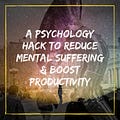



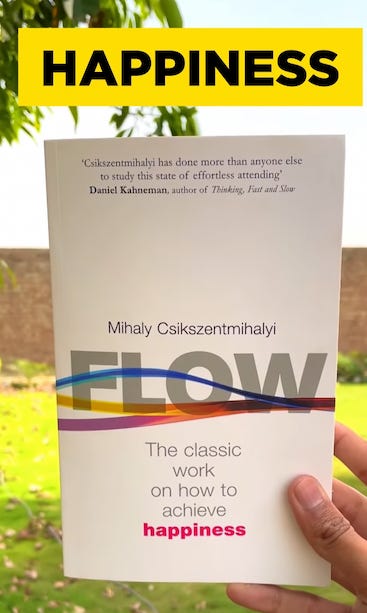





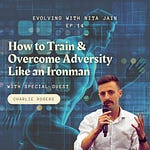
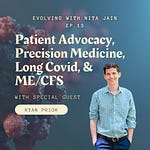


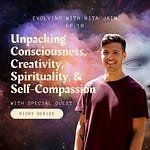
The Insanely Simple Life Hack You Need to Boost Happiness and Creativity